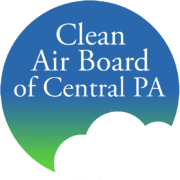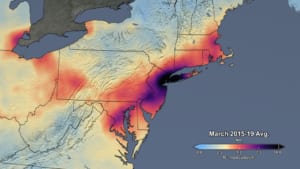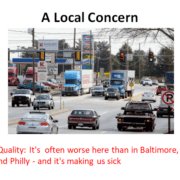The Pennsylvania Department of Environmental Protection and its regional air quality partnerships have forecast a Code Orange Air Quality Action Day for ozone on June 16, 2018 for the Pittsburgh region (encompassing Allegheny, Armstrong, Beaver, Butler, Fayette, Indiana, Mercer, Washington, and Westmoreland counties). A Code Orange Air Quality Action Day for ozone is also forecast on June 17 and 18 for the Pittsburgh region, southcentral counties (Cumberland, Dauphin, Lancaster, Lebanon, and York counties) and the Lehigh Valley (Berks, Lehigh, and Northampton counties).
On air quality action days, young children, the elderly and those with respiratory problems, such as asthma, emphysema and bronchitis, are especially vulnerable to the effects of air pollution and should limit outdoor activities.
The U.S. Environmental Protection Agency’s standardized air quality index uses colors to report daily air quality. Green signifies good; yellow means moderate; orange represents unhealthy pollution levels for sensitive people; and red warns of unhealthy pollution levels for all.
To help keep the air healthy, residents and business are encouraged to voluntarily restrict certain pollution-producing activities by:
• Refueling cars and trucks after dusk
• Setting air conditioner thermostats to a higher temperature
• Carpooling or using public transportation; and
• Combining errands to reduce trips.



 Over the past several weeks, NASA satellite measurements have revealed significant reductions in air pollution over the major metropolitan areas of the Northeast United States. Similar reductions have been observed in other regions of the world. These recent improvements in air quality have come at a high cost, as communities grapple with widespread lockdowns and shelter-in-place orders as a result of the spread of COVID-19.
Over the past several weeks, NASA satellite measurements have revealed significant reductions in air pollution over the major metropolitan areas of the Northeast United States. Similar reductions have been observed in other regions of the world. These recent improvements in air quality have come at a high cost, as communities grapple with widespread lockdowns and shelter-in-place orders as a result of the spread of COVID-19. 